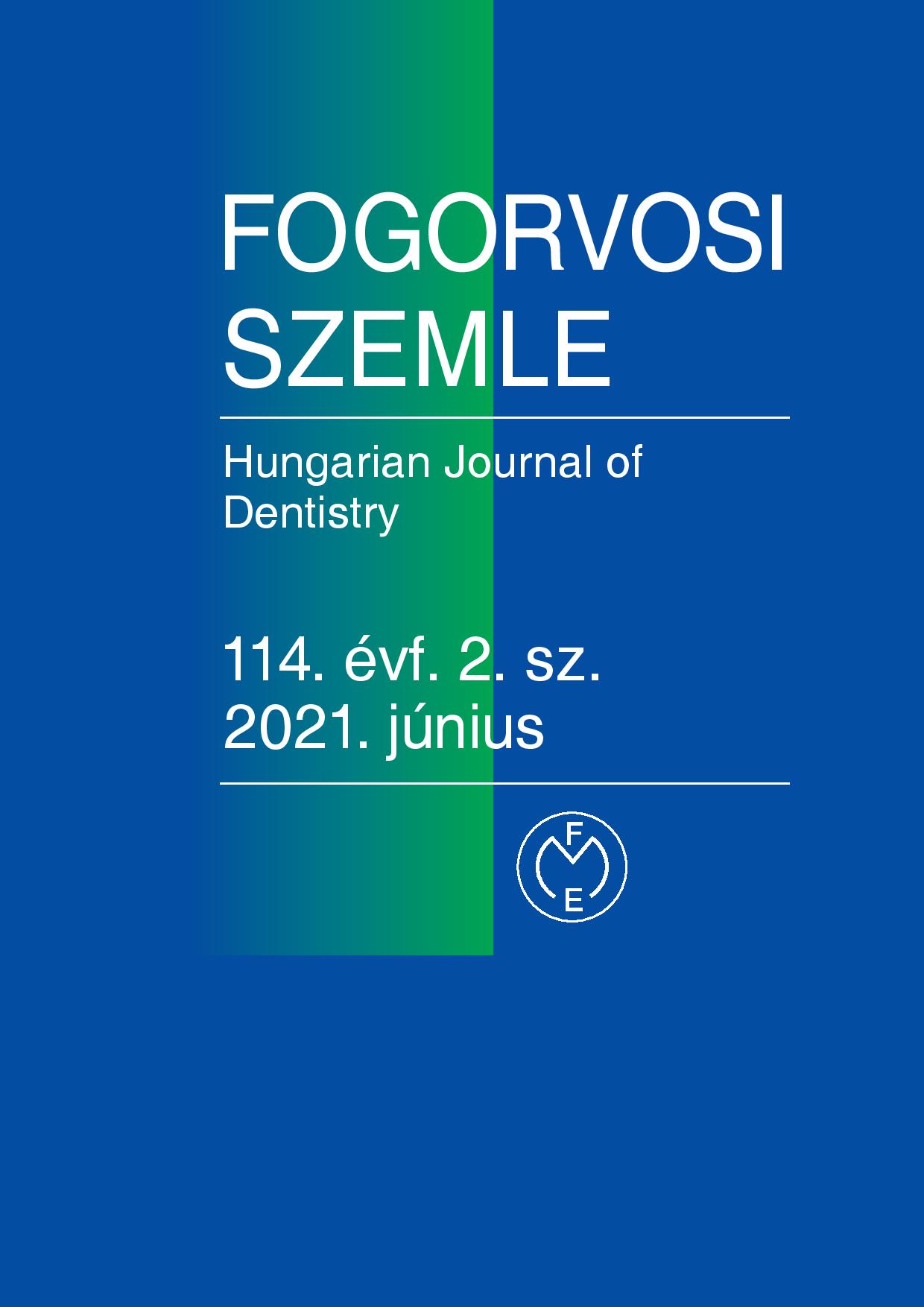Analysis of clinical data for craniomandibular dysfunction based on 10 years of gnathological experience
Abstract
Introduction, objectives: Craniomandibular dysfunction (CMD) is a masticatory dysfunction that can be extremely complex with several causes. The purpose of this study is to analyse based on our patient’s data in our 10-year experience the details specific to CMD. Material and method: Clinical, diagnostic and therapeutic data of 1741 patients (38 ± 19 years, 348 cases < 18 years, female/male: 3.7) were recorded according to the algorithm used in our daily practice. We also examined the incidence of each diagnosis, the types of pain onset, the risk factors for chronic diseases associated with CMD, and the effectiveness of treatment (drug, splint therapy and physiotherapy, as well as the combinations of these). Results: Clinical symptoms do not differ according to gender, but all types of CMD show strong female dominance (nearly 4-fold) and most patients are young (20–40 years). Overall, 80% of patients seek medical care within six months. The most common symptoms were parafunction (91.9%), dental contact disorder (86.9%) orofacial pain (77.2%), joint and muscle involvement (79.7% and 71.7%). The most common diseases were myalgia (31%), capsulitis + myalgia (24%), and compensated CMD (21%). The most important risk factors are orthodontic abnormalities, especially deep overbite (42%) and top bite (10%), skeletal comorbidities and occlusal differences. Complained parafunction often associated with psychological/psychosocial involvement (8.4%) and, if not, the chances of a pain sensation were halved (Odds ratio: 0.53CI95%: 0.35–0.91). Hypermobility (67%) and compensated CMD (43%), associated with several common comorbidities in which the most prevalent was the vertebral disorders. Overall, the therapies used were successful in 80% of the cases. Conclusions: Our findings highlight the complexity of CMD diagnostics and may help timely application of diagnostic and successful therapies in this predominantly juvenile, female-dominated disorder, which compromising the quality of life.
Copyright (c) 2021 Authors

This work is licensed under a Creative Commons Attribution 4.0 International License.


.png)




1.png)



